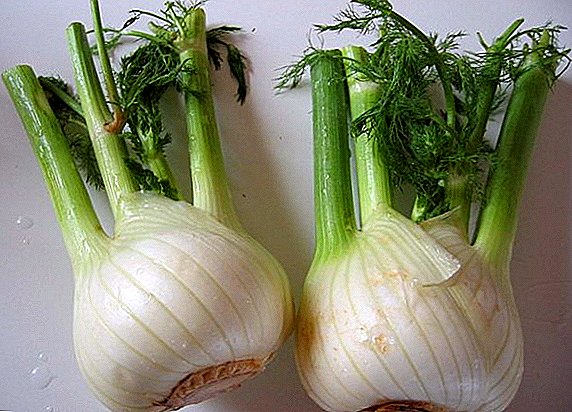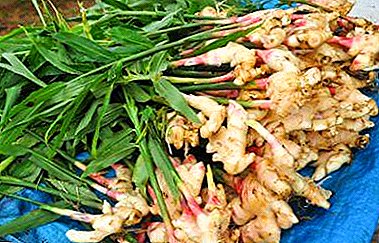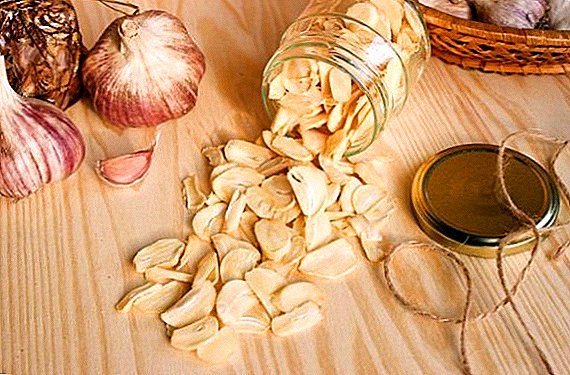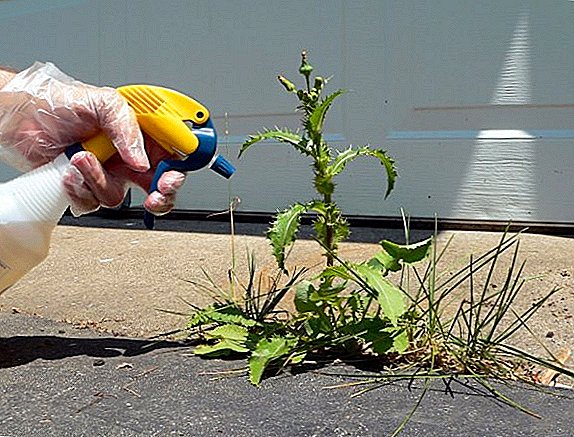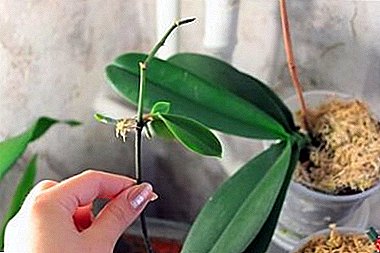
The orchid has beautiful flowers and a delicate scent. It is for these qualities that she fell in love with many gardeners. Almost everyone who has ever seen a blooming orchid wants this beauty to appear in the house. And those who are already growing it, want to get a new kind of orchids. One of the easiest ways to propagate this beautiful plant is grafting.
What is this way?
Definition
By choosing this breeding method, gardeners retain all the varietal biological properties of the plant.
What parts can I use?
 Orchid reproduction is carried out by dividing the bush, children or cuttings.
Orchid reproduction is carried out by dividing the bush, children or cuttings.
Is it possible to propagate the orchid leaf? It is impossible, because the leaves of this plant do not have points of growth.Orchid stem can serve as its tip or pedunclewhich for breeding is cut into pieces.
The processes must be divided into parts. Each part should be about 10-15 cm in size. It is imperative that each part has 2-3 buds. Each part of the kidney should be as low as possible.
Features
Benefits
- All qualities of the parent instance are inherited.
- The plant blooms in 1-2 years.
- There is no need to create special conditions for obtaining material for reproduction (cuttings).
disadvantages
- Cuttings often die.
- The processes are rooted for a long time.
At what point is it better to take a scion?
Orchid reproduction is best done in the spring. During the rest period, the plant is gaining strength and is well prepared for the growing season. Of course, the orchid must be healthy. Recommended to propagate the orchid age of three years.
Peduncle suitable for grafting should complete flowering.
Where and how to take the material to propagate the plant?
The stalk from the top of the orchid peduncle must be cut along with the aerial roots. Damaged areas must be treated with activated charcoal or fungicide..
Step-by-step instruction
Reproduction of orchids by cuttings at home occurs in this way.
How to cut a spike?
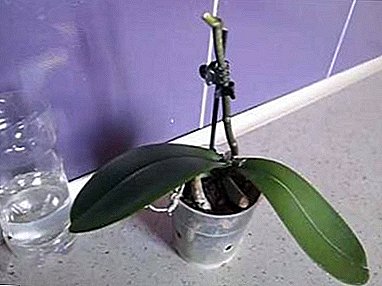 Peduncle must be cut as close as possible to the base. To do this, you can use a sharp knife, scalpel or razor blade.
Peduncle must be cut as close as possible to the base. To do this, you can use a sharp knife, scalpel or razor blade.Before carrying out the procedure, it is imperative that you disinfect with alcohol or an antiseptic.
- The resulting process should be divided into parts. Each part should be about 10-15 cm in size. It is imperative that each part has 2-3 buds. Each part of the kidney should be as low as possible.
- Treatment of cuttings and cutting sites on parent orchids.
- After cutting, all edges and cuts must be processed with activated carbon or brilliant green. This will prevent infection through the damaged area.
Greenhouse preparation
To create greenhouse conditions you will need a plastic container with a lid, a bag or a plastic bottle.
You can also choose a pot for planting, but it is harder to create greenhouse conditions. Holes must be drilled in the selected container..
Whatever dishes you choose, be sure to cover it with plastic wrap or glass wrap. Otherwise it is impossible to provide the required level of humidity. Steady high humidity is required for proper formation of the root system.
Planting in the greenhouse
At the bottom of the container you should definitely put sphagnum moss. Its main positive properties are bactericidal action and the ability to retain a large amount of moisture. Moss should be slightly moistened. Cuttings on the surface of the moss.
It is necessary to have so that the axillary kidney was directed upwards.
Cover and deepen the cuttings is not necessary. You can spray the substrate with a special solution of biostimulant, so the root system will develop more intensively. Dilute the biostimulator in a ratio of - 1 tablet to 1.5 liters of water.
Care of a sapling
 The container with the cuttings must be placed in a room in which the temperature is not lower than 25 degrees. After planting it is recommended to take care of the processes.. Periodically need to moisten the substrate. It should be with the help of a sprayer to irrigate about 1 time in 3 - 4 days.
The container with the cuttings must be placed in a room in which the temperature is not lower than 25 degrees. After planting it is recommended to take care of the processes.. Periodically need to moisten the substrate. It should be with the help of a sprayer to irrigate about 1 time in 3 - 4 days.
Water only need water at room temperature.
It is also worth taking care of the lighting. The processes should be well lit. But do not put them under direct sunlight. Otherwise, the temperature in the greenhouse will be above normal. If the light is not enough, you can use additional lighting fluorescent lamps.
Move to the pot
After the appearance of the roots and leaves on the handle, it is worth thinking about transplanting it into a separate pot. Used for planting is not the whole cutting, and the baby, which appeared from the kidney. The young plant needs to be transplanted into a new substrate. You can buy it in the store or prepare it yourself.
Just mix the bark of pine, charcoal, sphagnum moss. Drainage requires fine clay or pebbles. Before mixing it is necessary to boil pine bark and dry. The bark particles must be about 8 to 10 mm in size.
Sphagnum moss is recommended to be soaked in potassium permanganate solution before use.. Fine clay is sent for heat treatment.
- The pot should be chosen plastic and transparent.
- Holes must be made in it to ensure free access of air. It must also be disinfected.
- At the bottom of the pot is placed drainage.
- After that, the baby should be placed in the middle of the pot.
- Next, sprinkle it with a mixture of pine bark and charcoal. And on top lay sphagnum moss.
- The resulting substrate should be sprayed with room temperature water from a spray bottle.
- Place the pot in a bright place and water it once in 3 days.
A photo
Next you can see a photo of an orchid and its cuttings:



Problems after separation from the parent plant
Due to poor sterility, bacteria or fungi can quickly develop., which leads to rotting.
Further care
For further growth and rapid development of orchids should create optimal conditions.
- Lighting. The plant should be in a bright room for at least 12 hours. The window is better to choose from the east or south-east side.
- Temperature. The optimum temperature in the summer is 18-25 degrees. In winter - 12-15 degrees.
- Watering. Watering is recommended when it is noticeable that the substrate dries out. In spring and summer watering is carried out 1-2 times a week. In winter, watering is reduced to 2 times a month.
An interesting way to determine the watering is the need for watering when the roots brighten.
- Fertilizer. Feed should be about 2 weeks after planting. For feeding, special complex fertilizers enriched with microelements and minerals are suitable.
The dosage of fertilizer must be reduced by 3-4 times. To accelerate the growth of orchids are recommended to use fertilizers with a high content of nitrogen.
- Humidity. Indoors, the air humidity should be 60-70%.
The orchid is quite a capricious plant, so everyone who plans to grow it at home should be prepared for the basic requirements for care. If the flower is provided with comfortable conditions, it will long delight with a beautiful flower spike and pleasant aroma.


 Peduncle must be cut as close as possible to the base. To do this, you can use a sharp knife, scalpel or razor blade.
Peduncle must be cut as close as possible to the base. To do this, you can use a sharp knife, scalpel or razor blade.